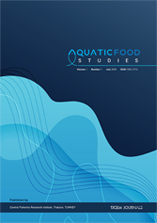Horticultural Studies (HortiS)
2022, Vol 39, Num, 3 (Pages: 079-084)
Effects of Different Embryo Development Stages and GA3 Doses on Germination in Clementine Mandarin × Carrizo Citrange Immature Embryos
Şenay KURT 1 ,Ertuğrul TURGUTOĞLU 1 ,Gülay DEMİR 1
1 Batı Akdeniz Agricultural Research Institute, 07100, Antalya, Türkiye
DOI :
10.16882/HortiS.1149646
Viewed :
2394
-
Downloaded :
1847
Citrus rootstock breeding is important to improve their resistance to diseases,
pests and adverse environmental conditions. The majority of citrus species have
nuceller embryony. Although Clementine mandarin is monoembryonic, in some
cases (intercrossing etc.) abortive seed formation can be seen frequently. In this
study, Clementine mandarin × Carrizo citrange were crossed. In the study,
interspecies hybridization (Citrus × Poncirus) was used. Embryo rescue
technique was used to prevent the loss of hybrid individuals due to abortive seed
formation. The seeds were gathered from the crossed plants 80, 100, and 120
days after pollination. The immature embryos were removed from the seeds and
these embryos were transferred to control, 0.5, and 1.0 mg l-1 GA3 containing
medium to germination. The highest germination rate with 100% was observed
from 1.0 mg l-1 GA3 containing media harvested 120 days after pollination.
Additionally, the highest rate of trifoliate seedlings was obtained from embryos
gathered after 120 days of the pollination.
Keywords :
Citrus Embryo rescue Germination Hybridization Trifoliate














